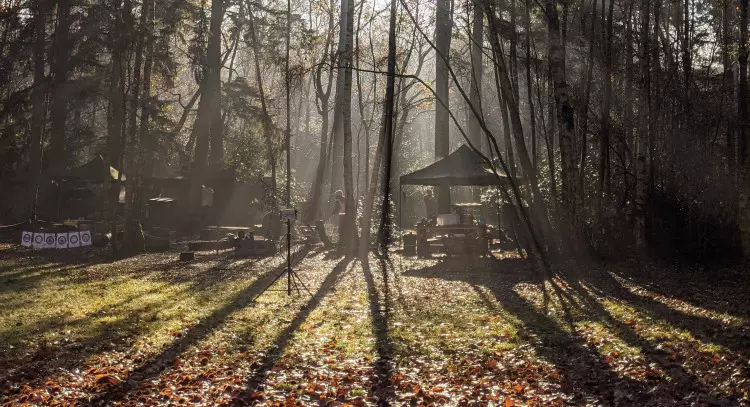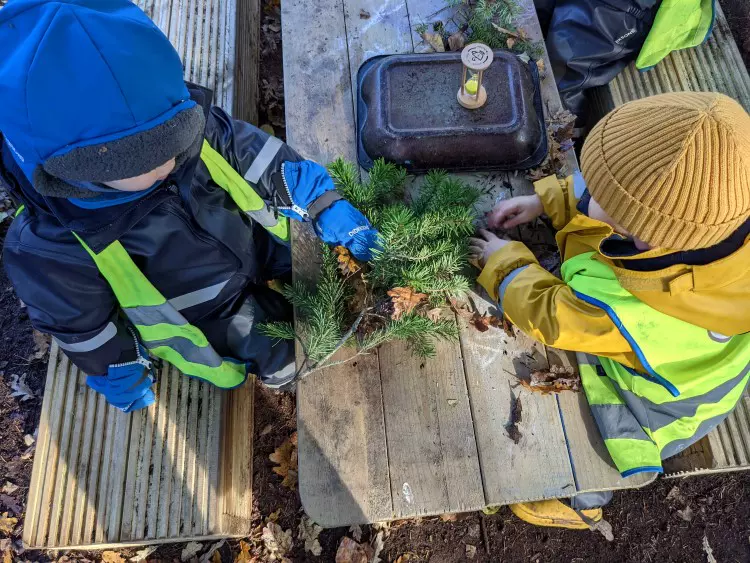Environmental education for children is crucial in fostering a generation that understands the importance of sustainability and the impact of their actions on the planet. By introducing children to environmental concepts at an early age, we can instill a sense of responsibility and awareness about issues like climate change, conservation, and biodiversity. This education helps them develop the critical thinking skills needed to make informed decisions about the environment as they grow older. Furthermore, environmental education encourages children to adopt eco-friendly habits, such as recycling and reducing waste, which can have long-lasting benefits for the planet. Teaching children about the environment also empowers them to become advocates for positive change, ensuring a more sustainable future for generations to come.

Forest schools make an important contribution in such education. Moreover they play a vital role in children’s development by fostering creativity, resilience, and a strong connection to nature, while also promoting physical, emotional, and social growth through hands-on, outdoor learning experiences. Children and educators spending many hours in the foresty outdoors, rain or shine, exploring nature, interacting with the elements and noticing the gifts that each season brings. This is a taste of Forest School.
What is forest schooling?
How did Forest Schools originate? The history of forest schooling goes back at least to the 19th century and is based on a rich heritage of outdoor learning. Philosophers, naturalists and educators from Europe and the UK such as Wordsworth, Ruskin, Leslie Paul, Kurt Hahn, Susan Isaacs and the Macmillan sisters, laid the foundations for what is known as Forest School today. Ella Flautau created the first forest school in Denmark in the 1950s. The idea formed initially as an unofficial gathering of partents and children in a nearby forest. Consequently the parents created an initiative to establish the first forest kindergarten. In 1985 Siw Linde established the first forest school in Sweden based on Frohm’s model called I Ur och Skur (Rain or Shine Schools). Waldkindergartens also began popping up in Germany in the 1960s with the first officially recognised Forest Kindergarten in 1993 in Flensburg.

The first forest school in the UK emerged in the 1990s, inspired by the Danish pre-school system. In 1995 a BTEch in Forest School was developed that was offered to early years practitioners in particular. In 2002 a network of practitioners held the first national conference at which a UK definition of Forest School was formulated: ‘An inspirational process that offers children, young people and adults regular opportunities to achieve, develop confidence and self esteem through hands-on learning experiences in a local woodland environment.’
Forest School is also defined by six key principles:
1) Forest School is a long-term process of frequent and regular sessions in a woodland or natural environment, rather than a one-off visit. Planning, adaptation, observations and reviewing are integral elements of Forest School.
2) Forest School takes place in a woodland or natural wooded environment to support the development of a relationship between the learner and the natural world.
3) Forest School aims to promote the holistic development of all those involved, fostering resilient, confident, independent and creative learners.
4) Forest School offers learners the opportunity to take supported risks appropriate to the environment and to themselves.
5) Forest School is run by qualified Forest School practitioners who continuously maintain and develop their professional practice.
6) Forest School uses a range of learner-centred processes to create a community for development and learning.

An insider view of forest school.
So what does a Forest School look like from the inside? Outdoor Owls, the nursery that I work at accepts children from 20 months to 5 years. There are different camps in the forest for different groups of children. The boundary of each camp is marked by an orange rope, which children are reminded not to cross in the daily recitation of our forest rules. Every camp has a fire circle where we gather to sing, read, play instruments or explore any circle time topic that an educator leads. There are play areas including a mud kitchen, obstacle course, tables for mealtimes and play, a care tent and a yurt, where the younger children go to sleep in the colder months. When it is warmer they sleep in a gazebo. As well as having plenty of opportunity to play within camp, chidren are taken on adventure walks to explore the forest and fields and continue their free or guided play there.
Having worked at Outdoor Owls for almost three months, I can wholeheartedly recommend this nursery and the Forest School approach to any parent who wants a more holistic and natural educational setting for their child. I am sure you have heard this many times, but I’ll say it again. Spending time in nature is not just good for so many aspects of human health, but essential for our welfare. For hundreds of thousands of years we lived more seamlessly as a part of nature. The memory of our ancestors’ lies deep within our bones. It was only some 250 years ago that the Industrial Revolution gave us our new existence. However you look at it, nature is our home. Scientific studies carried out on forest bathing, (a concept popularized in Japan), show that this practice stimulates the parasympathetic nervous system, lowers blood pressure, improves sleep quality, softens the effects of PTSD and lessens anxiety. While Forest School and forest bathing are not the same, I would say that simply being in a safe, harmonious space in nature, is therapeutic in itself. Those who have worked in indoor nurseries and Forest Schools can see that children are significantly more settled and relaxed in an outdoor setting.

Children also have the opportunity to interact directly with the elements that make up our world on a regular basis. Watching campfires being lit and sitting around the campfire is an age-old practice, which city-dwellers are not so familiar with nowadays, and which is becoming less popular in some rural areas too since we do not rely on fire as our main source of heating anymore. Being dressed appropriately to play outside in the rain and stomp or roll around in puddles develops their interaction with the element of water. We also lead activities connected to the element of air such as holding colourful scarves and seeing the wind blow through them, or simply commenting on the shaking of tree branches. The element of earth is of course all around us.
In a world where the governing systems do not respect natural habitats or natural diversity and are still taking much more than giving back, Forest School sows seeds of hope. It naturally fosters a child’s innate curiosity for the world that surrounds them, helps them understand their connection with nature and develops a sense of love and respect for nature. With passionate and compassionate educators who help children build their independence, take age-appropriate risks and feel free to explore the great outdoors, it is a beautifully crafted setting that lives, breathes and develops with every gust of wind, ray of sunshine and turn of the seasons.


